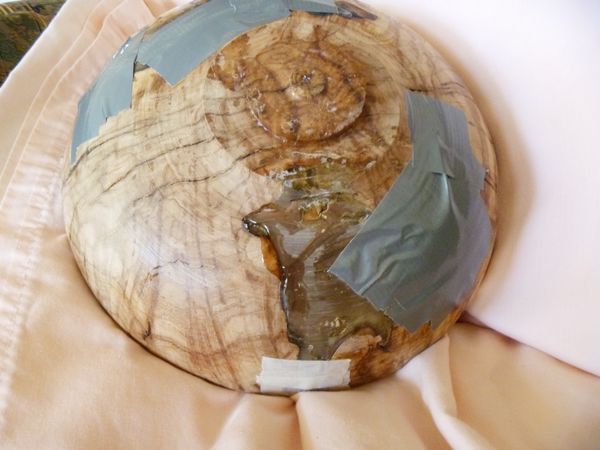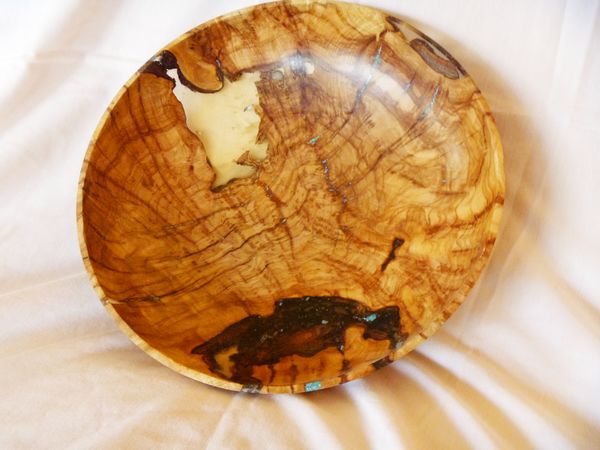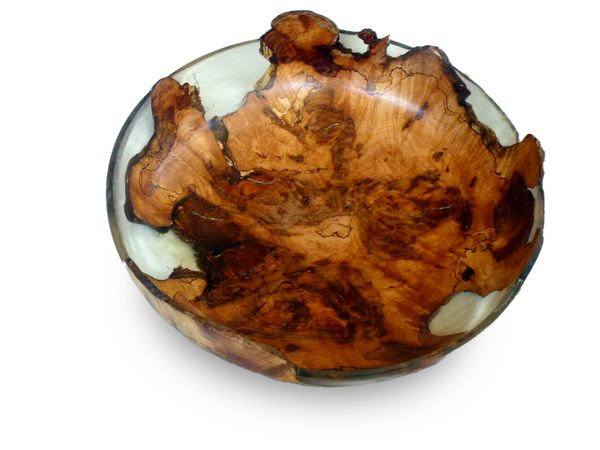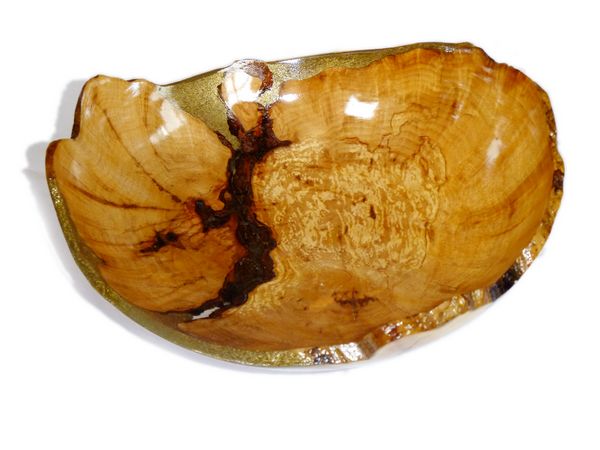
By Joe Llewellyn
I am a woodturner working on a wood lathe making various round objects from bowls to bottle stoppers to pens. This includes epoxy bowls.
I started turning irregular pieces of wood like burls and became frustrated with all the defects in the rotten or punky wood, and the various holes that needed to be filled or stabilized in order to keep the piece together. I began using WEST SYSTEM 105 Resin and 207 Special Clear Hardener as recommended by the WEST SYSTEM technical advisors.
I pumped one stroke each of 105 Resin and 207 Hardener into a small paper cup and mixed them. I poured small amounts of the epoxy into voids in the wood piece, making a form from duct tape to hold the mixture. Of course, the epoxy mixture runs flat, so it takes patience and time to get the desired results when filling a void. As the void fills I apply another cup full until it is filled to the desired level. I then allow the epoxy to cure overnight.

The next day, I take the wood piece back to the lathe and turn off the excess material, apply more epoxy (using duct tape again) and fill the remaining voids. After this cures, I take the epoxy bowls back to the lathe for the final removal of excess cured epoxy material to get the final piece I want, for example, a bowl with a window in the side.

After turning the piece to completion, I sand it starting with 60 or 80-grit sandpaper discs using a power sander, and continue sanding thru 2000 to 3000-grit to remove all scratches. This results in a transparent window that is very attractive in a bowl. People seem to like it.

I’ve learned that another way to use the epoxy mixture is to add a filler such as brass shavings I get from a key maker’s shop, or sanding dust off the lathe. I mix these into the epoxy to fill the wood voids. This makes the epoxy more workable since it won’t run quite so much. It also provides a rather stunning result, like gold from the brass and coloring from the wood shavings.
Of course nothing guarantees perfection but the result is attractive. The epoxy keeps difficult burl wood, which may be rotten, held together nicely.





